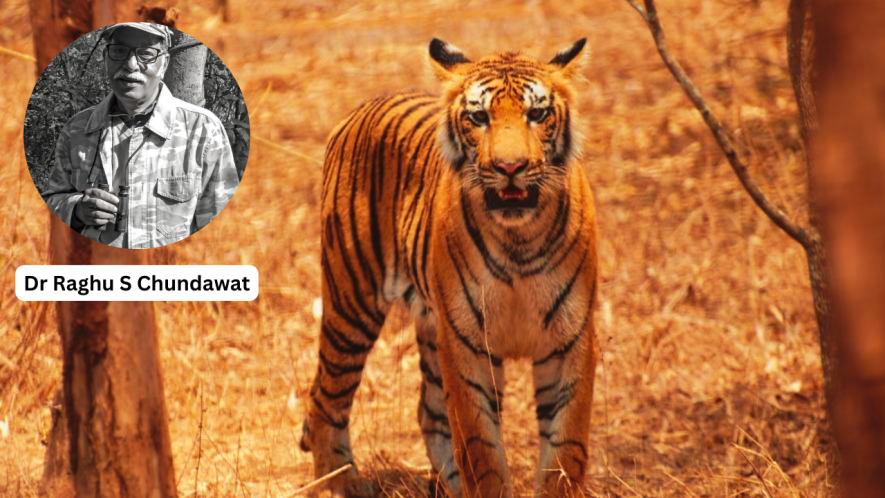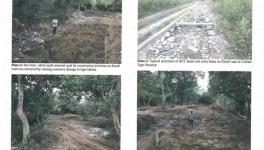Where is India After Fifty Years of Project Tiger?

Image courtesy: Rashme Sehgal and Flickr
Dr Raghu S Chundawat is a conservation biologist who has done pioneering research on tigers and snow leopards. His book, The Rise and Fall of the Emerald Tigers: Ten Years of Research in the National Park, is considered an influential work on tiger conservation. He believes India must experiment with new approaches to conservation and especially create forest corridors they can move through. He speaks with Rashme Sehgal on where India and the tiger have reached fifty years after Project Tiger. He says India would have had thousands more tigers if the project had performed well, with available money and expertise. Edited excerpts.
Project Tiger started with much fanfare fifty years ago when we found that we had less than 3,000 tigers. The last Tiger Census in 2018 counted 2,967 tigers. Would you say Project Tiger has been a success?
In 1973, Indians were shocked because we were down to only 3,000 tigers. This is called Conservation Amnesia, which basically alludes to the shifting syndrome of baselines. Perceptions change with every generation. Fifty years ago, the older generation, who had seen or heard of thousands of tigers in the wild, was shocked to learn that the tiger population was down to less than 3,000. And that came down further to 1,600 tigers. Today we are celebrating because the tiger population has doubled and was last counted at 2,967.
But census numbers are not comparable because protocols keep changing. In 2018, 300 numbers were added to the census by including cubs between 12 and 18 months old. The practice in the past was that cubs between one to 18 months old were not included in the census.
That is why it [the Ministry of Environments, Forests and Climate Change] claims the numbers are more than what they are on the ground—baghon mein bahaar hai.
The 2006 Tiger Census could not cover the entire country. The next census covered a greater part but not the whole country. It was the fourth census which covered the entire country.
Is it true that India has many underperforming tiger reserves, and some have no tigers?
Four tiger reserves in the country, including the Dampa Reserve in Mizoram, Buxa Reserve in West Bengal, Palamau Reserve in Jharkhand and Indravati Reserve in Chhattisgarh, have no tigers. Fourteen other reserves are underperforming with very low tiger densities.
Why is that?
It is primarily because of poor management. It all boils down to an incompetent cadre. After all, the forest cadre is being given funds and enjoys a legal support framework, so there is no reason why they should be underperforming. If Project Tiger had been performing properly, with all the money and expertise available, we would have been celebrating with 10,000 tigers.
What have been the bottlenecks?
There have been three serious bottlenecks. The first is range contraction, where the space available in forest areas is too small and not viable enough to sustain a tiger population. The other is small population size, which means a viability problem, and the third is that there is little connectivity between these populations, forcing them to live in isolated pockets. We need to develop corridors for tigers to be able to move about.
What is the way out, given that our forests are increasingly fragmented?
In the present system, our tiger habitats are being run by forest departments. I believe our territorial forests can be managed by inviting outside parties. We can have a system of joint management where the profits can be shared with the local inhabitants.
Are you saying tigers must be allowed to move around?
Yes, but we have not planned for tigers to go from one reserve to another. When a tiger goes out of the reserve, we see it as a problem. But tigers will go out, and we have to let them go out, which is why corridors are so important for animals to move around freely.
Instead of having a single large population, we need to create a network of small satellite populations. We need to build viable metapopulations that will provide a link between protected tiger populations and also help us build on the present system as it serves to complement our existing conservation efforts. It will help create a more extensive conservation landscape.
How should this be done?
We need to promote wildlife tourism in a holistic manner, as has been done by several countries. A survey conducted in Madhya Pradesh in 2017 showed that around Rs 50,000 was generated from every square kilometre of tiger forest that was opened up to tourists. We have many other iconic animals, such as elephants, lions and rhinos, which can be showcased.
If South Africa can earn 3% of its GDP and provide employment for 4.3% of its population, and Scotland can earn 70 million pounds annually from wildlife tourism, then why can’t India do the same? Instead of ten big tiger reserves, we could have several smaller protected areas where we keep tigers. To cite one example, we can connect Panna with the Ratapani and Nauradehi tiger reserves [the latter was recently made a tiger reserve], which are all in Madhya Pradesh, helping create better survival conditions for tigers in all three habitats.
In India, forests are primarily only under the jurisdiction of the forest department. But these are down to 7% of their original habitat. The range contraction has been acute, and this is the first sign of the extinction of a species. To prevent this, conservation must now take place outside these reserves—just as connectivity has to be maintained outside these reserves.
What is the main stumbling block to conservation?
I put the onus of responsibility on the bureaucrats of the forest department. They create walls between people and politicians. For example, when the government wanted to bifurcate the Panna tiger reserve, all the forest officer had to do was refuse to give his consent on the concerned file. If he had done so, no politician or judge could have overruled him. And what punishment could have been meted out to him? At worst, he would have been transferred, but it would have stopped the destruction of the reserve.
(Rashme Sehgal is a freelance journalist.)
Get the latest reports & analysis with people's perspective on Protests, movements & deep analytical videos, discussions of the current affairs in your Telegram app. Subscribe to NewsClick's Telegram channel & get Real-Time updates on stories, as they get published on our website.
























